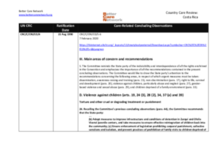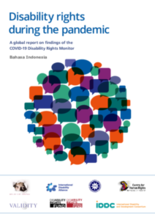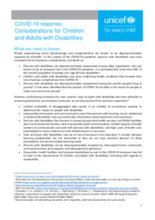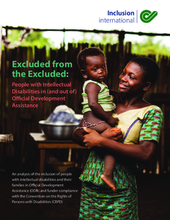Displaying 111 - 120 of 462
This country care review includes the care related Concluding Observations adopted by the Committee on the Rights of Persons with Disabilities and the Committee on the Rights of the Child.
This brief identifies the steps necessary to realize an integrated system of care, reviews two current approaches, and makes recommendations—including specifying policy reforms that would promote interagency collaboration, integration, service delivery, and improved outcomes for California’s children, both with and without disabilities.
The current study provides a more nuanced account of foster youth with disabilities’ transitions into adulthood.
The objective of this study is to understand the use of parental-group intervention for helping parents understand the problems of their children and to develop skills to deal with those problems.
This document is a repository of resources focusing on Covid-19, disability, mental health, chronic health conditions and related topics curated by the International Disability and Development Consortium Inclusive Health Task Group (IDDC IHTG) and the CORE Group Disability Inclusive Health Technical Advisory Group.
This report (translated into Bahasa Indonesia) has one central purpose: To raise the alarm globally as to the catastrophic impact of the COVID-19 pandemic on persons with disabilities worldwide, including children with disabilities, and to catalyse urgent action in the weeks and months to come.
On this page, you will find stories from people with various disabilities across the globe sharing their experiences with the COVID-19 outbreak and pandemic risk reduction strategies implemented by their governments.
This chapter describes a youth-centered approach to transition planning for this vulnerable population and highlights essential elements to consider during the process such as disability, mental health, trauma, resilience, self-determination, culture, and how trauma impacts mental health.
UNICEF has produced a guidance note on considerations for children and adults with disabilities in the COVID-19 response.
This report analyzes data available through the Organization for Economic Cooperation and Development (OECD) Development Assistance Committee (DAC)’s Creditor Reporting System (CRS), which reveals that many mainstream development projects fail to include people with intellectual disabilities, including children. The report includes guidance for ensuring CRPD-compliant project funding, including examples of community living projects that align with the CRPD, such as supporting the transition of people with disabilities from institutions to independent living and providing training for families on supporting their children with disabilities at home.





